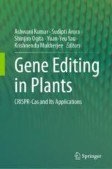Search
Search Results
-
Insect-Resistance of Aquilaria sinensis (Lour.) Leaves is Associated with Volatile Compounds
AbstractAquilaria sinensis (Lour.) is listed as a nationally endangered plant in China. Heortia vitessoides (Moore) is an important monophagous...

-
Growth performance and scale insect infestation of Shorea leprosula in a common garden experimental plot
Many tree planting programmes have long been initiated to increase forest cover to mitigate the effects of global climate change. Successful planting...

-
Composition and Distribution of Insect Faunas of the World. 4. Holarctic Kingdom
AbstractThis chapter is devoted to the Holarctic Kingdom, one of the four major parts distinguished in the world fauna. This enormous zoogeographic...

-
Forest microbiome and global change
Forests influence climate and mitigate global change through the storage of carbon in soils. In turn, these complex ecosystems face important...

-
Phosphine resistance among stored product insect pests: A global meta-analysis-based perspective
Phosphine is the most common fumigant used for stored product protection, and its use intensified with the global phasing out of methyl bromide due...

-
Unique bird diversity in an Ethiopian church forest
Today, most of Ethiopia’s church forests are small forest patches surrounded by a degraded and anthropogenically modified landscape, mostly arable...

-
Semiochemicals and Insect Control
Semiochemicals are an important alternative to chemical insecticides in crop production. In this chapter, we summarize current applications and...
-
Composition and Distribution of Insect Faunas of the World. 3. Palaeotropical Kingdom
AbstractThis chapter is devoted to the Palaeotropical Kingdom, one of the four major zoogeographic entities distinguished in the world fauna. In the...

-
An Insight into Fungi in Forest Ecosystems
A fungus is a eukaryotic and heterotrophic organism that depends on other organisms for its food. Fungi digest food outwardly and absorb food...
-
Insect decline in forests depends on species’ traits and may be mitigated by management
Insects are declining, but the underlying drivers and differences in responses between species are still largely unclear. Despite the importance of...

-
Impact of early insect herbivory on the invasive oak lace bug (Corythucha arcuata Say, 1832) in different oak species
Insect herbivores co-occurring on the same host plant interact in various ways. In particular, early-season insect herbivory triggers a wide range of...

-
Chestnut caching behavior of Chinese white-bellied rats (Niviventer confucianus) and South China field mice (Apodemus draco): effects of seed size and insect infestation
AbstractUnderstanding rodent seed caching behavior is critical for effective forest management and conservation. While it is well established that...

-
Emerging trends in insect sex pheromones and traps for sustainable management of key agricultural pests in Asia: beyond insecticides—a comprehensive review
Global crop productivity is reduced by 20–40% annually due to agricultural pests. Mass trap** with insect sex-pheromones have been the major option...

-
Ecofriendly Management of Insect Pests for Sustainable Agriculture
The sustainability in food security is the prime objective of modern world as humans are facing severe challenges of poverty and hunger at global...
-
Floral resource maps: a tool to explain flower-visiting insect abundance at multiple spatial scales
ContextFlower-visiting insects depend on floral resource availability from both cultivated and semi-natural habitats in agricultural landscapes....

-
Composition and Distribution of Insect Faunas of the World. Introduction
AbstractA summary review of modern insect zoogeography and the results of geographic analysis of the world insect fauna are presented. The...

-
Resilient fruit-feeding butterfly assemblages across a Caatinga dry forest chronosequence submitted to chronic anthropogenic disturbance
AbstractInterest in forest regeneration has increased as secondary forests in regeneration process are cited as the forests of the future. However,...

-
CRISPR-Based Genetic Control Strategies for Insect Pests to Mitigate Classical Insecticidal Approaches
Nutraceutical properties of food have always been an important interface of concern as food directs both physical and mental health and forms the...
-
Network Framework for Forest Ecology and Management
Applications of network science to forest ecology and management are rapidly being adopted as important conceptualization and quantitative tools....
-
Timing matters: remotely sensed vegetation greenness can predict insect vector migration and therefore outbreaks of curly top disease
Due to climate change, outbreaks of insect-vectored plant viruses have become increasingly unpredictable. In-depth insights into region-level...

